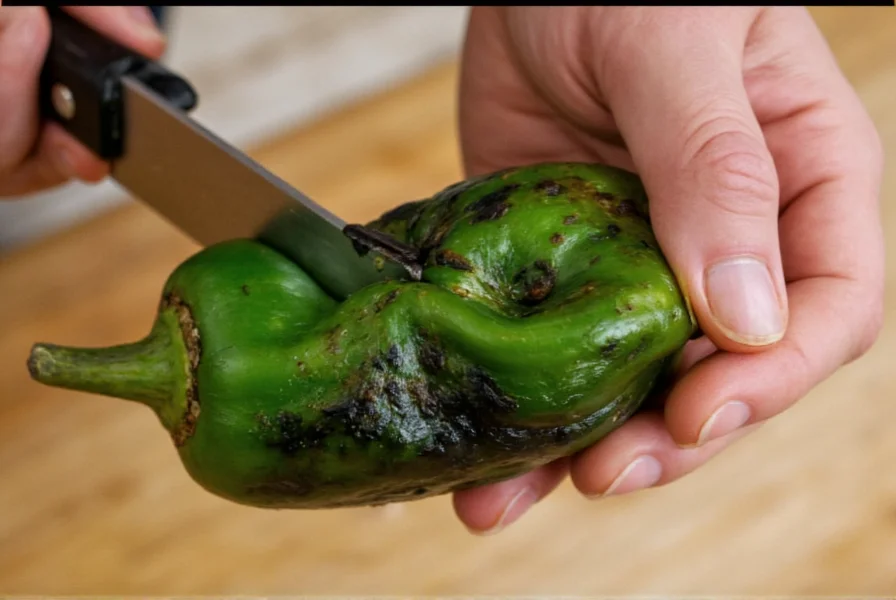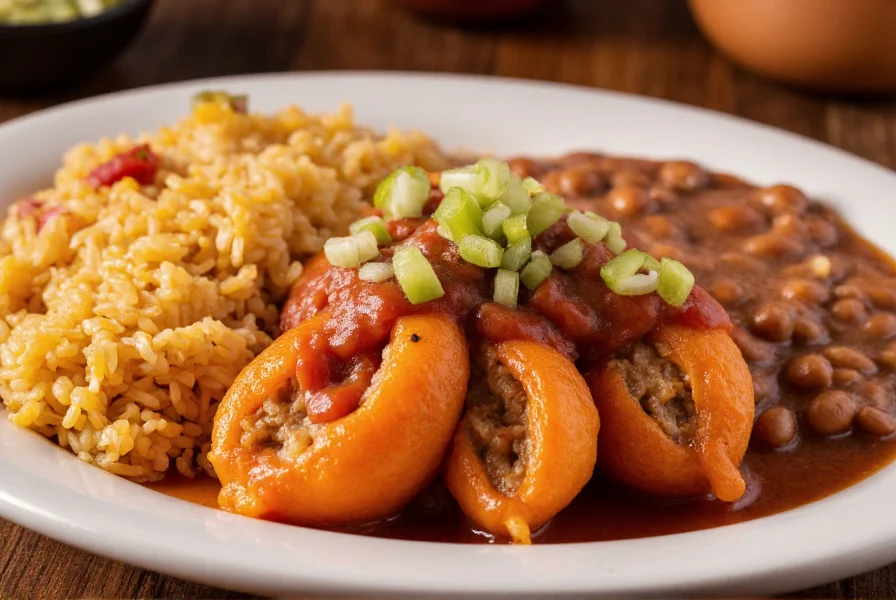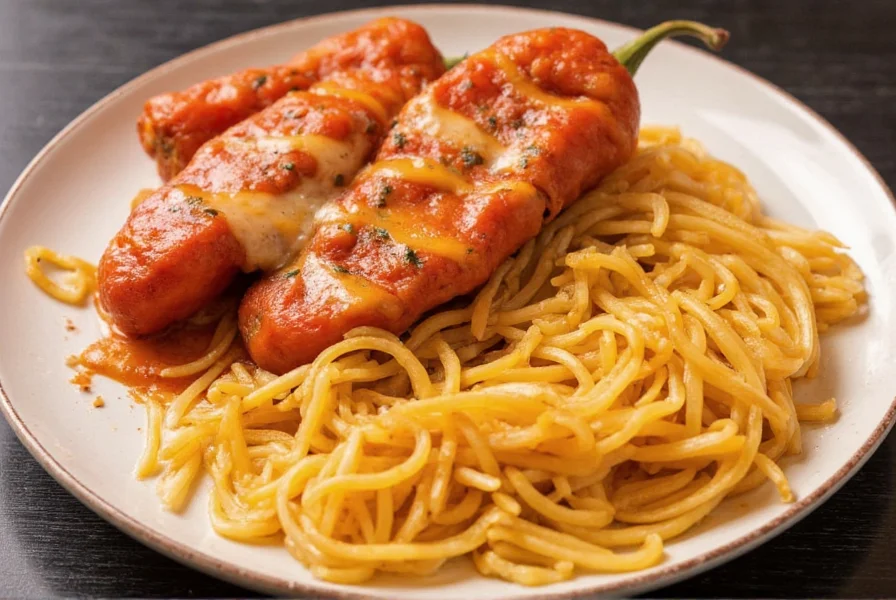Creating authentic chili rellenos requires attention to detail at every stage, from selecting the right peppers to mastering the delicate frying process. This traditional Mexican dish features roasted poblano peppers stuffed with cheese, coated in a fluffy egg batter, and fried to perfection. The magic happens when the crispy exterior gives way to melted cheese and tender roasted pepper—a combination that's both simple in concept and challenging to execute flawlessly.
Essential Ingredients for Perfect Chili Rellenos
The foundation of exceptional chili rellenos lies in using quality ingredients and understanding their roles in the final dish. While regional variations exist across Mexico, certain elements remain consistent for authentic results.
| Ingredient | Traditional Amount | Key Purpose |
|---|---|---|
| Fresh poblano peppers | 6 medium | Meaty texture that holds shape when roasted and stuffed |
| Queso fresco or Monterey Jack | 12 oz (340g) | Melts perfectly without leaking while maintaining structure |
| Eggs (separated) | 4 large | Creates light, stable batter when properly whipped |
| All-purpose flour | ½ cup | Helps batter adhere to peppers before egg coating |
| Vegetable oil | 2 cups | For frying at proper temperature (350°F/175°C) |
Pepper Preparation: The Critical First Step
Proper pepper preparation separates authentic chili rellenos from disappointing imitations. Many home cooks skip essential steps that ensure structural integrity during frying.
Begin by charring the poblanos directly over a gas flame, under a broiler, or on a grill, turning frequently until evenly blackened (about 8-10 minutes). Place the charred peppers in a covered bowl or sealed plastic bag for 10 minutes—this steaming process loosens the skin. Carefully peel away the blackened skin while preserving the pepper's shape. Make a small incision along one side, gently remove seeds and membranes while keeping the pepper intact, and rinse lightly if needed.
For best results, soak prepared peppers in cold water for 15-20 minutes. This crucial but often overlooked step firms up the pepper walls, significantly reducing breakage during stuffing and frying. Pat thoroughly dry before proceeding.

Mastering the Filling and Batter
The cheese filling requires specific handling to prevent leakage during cooking. Cut your cheese into long, thin strips slightly smaller than your peppers' interior cavity. Avoid pre-melting the cheese, as this compromises structural integrity. Traditional recipes use queso fresco for its high melting point, but Monterey Jack offers a good alternative for those preferring more melt.
The batter makes or breaks chili rellenos. Separate eggs completely—any yolk in the whites prevents proper whipping. Whip egg whites with a pinch of salt until stiff peaks form (when the bowl is inverted, whites shouldn't slide). Gently fold in beaten yolks. The batter should be light and airy, not runny. Dredge peppers first in flour, then dip in egg batter, ensuring complete coverage while maintaining a thin, even layer.
Frying Technique: Temperature Control is Everything
Oil temperature management separates successful chili rellenos from greasy failures. Heat oil to precisely 350°F (175°C) in a heavy skillet—use a thermometer for accuracy. Test with a small amount of batter; it should sizzle immediately and rise to the surface without browning too quickly.
Fry 2-3 peppers at a time to avoid temperature drops. Gently lower each pepper into the oil and use tongs to carefully turn occasionally until golden brown on all sides (about 3-4 minutes total). Drain on wire racks, not paper towels, to maintain crispness. Never cover fried rellenos, as this creates steam that softens the crust.
Avoiding Common Chili Rellenos Mistakes
Even experienced cooks encounter challenges with this deceptively simple dish. Understanding these pitfalls ensures success:
- Pepper breakage: Caused by insufficient soaking after peeling or improper seed removal. Always use a small, sharp knife and work gently.
- Soggy coating: Results from oil that's too cool or batter that's too thick. Maintain precise temperature and use a light, airy batter.
- Cheese leakage: Occurs when peppers aren't properly dried before stuffing or when cheese pieces are too large. Pat peppers thoroughly and use appropriately sized cheese sticks.
- Bitter peppers: From inadequate charring or incomplete removal of blackened skin. Ensure even charring and thorough peeling.
Serving Authentic Chili Rellenos
Serve immediately after frying for optimal texture. Traditional accompaniments include:
- Tomato-based ranchero sauce or fresh salsa verde
- Refried beans (preferably handmade)
- Mexican rice
- Crema or sour cream
- Avocado slices
For an authentic presentation, arrange two rellenos per plate with sauce drizzled over the top rather than underneath, which would compromise the crispy coating. Garnish with fresh cilantro and a lime wedge.

Variations and Modern Adaptations
While traditional cheese-filled rellenos remain popular, creative variations have emerged:
- Vegetarian options: Add cooked corn, black beans, or diced mushrooms to the cheese filling
- Meat versions: Incorporate shredded chicken or ground beef (typically in northern Mexico)
- Baking alternative: For a lighter version, bake at 400°F (200°C) for 15-20 minutes (though texture differs from fried)
- Regional differences: Oaxacan versions often include plantains, while Pueblan recipes emphasize cheese purity
Storing and Reheating Leftovers
Chili rellenos are best enjoyed fresh, but leftovers can be stored properly:
- Refrigerate in an airtight container for up to 2 days
- Never freeze fried rellenos—the texture becomes unappealing
- Reheat in a 350°F (175°C) oven for 8-10 minutes until warmed through
- Avoid microwaving, which makes the coating soggy
- Re-crisp in an air fryer at 375°F (190°C) for 3-4 minutes for best results
Frequently Asked Questions
Can I use bell peppers instead of poblanos for chili rellenos?
While bell peppers can be used in a pinch, they lack the distinctive flavor and thicker walls of poblanos, which are essential for authentic chili rellenos. Bell peppers have thinner walls that often collapse during frying. If substituting, choose larger, thicker-walled varieties and expect a milder flavor profile without the characteristic poblano heat.
How do I prevent my chili rellenos from breaking apart during frying?
To prevent breakage: 1) Soak prepared peppers in cold water for 15-20 minutes to firm them up 2) Handle peppers gently when stuffing 3) Ensure oil is at proper temperature (350°F/175°C) 4) Use a light, airy egg batter rather than a heavy coating 5) Fry only 2-3 peppers at a time to maintain oil temperature. Proper pepper preparation is the most critical factor in maintaining structural integrity.
What's the best cheese for traditional chili rellenos?
Queso fresco is the traditional choice for authentic Mexican chili rellenos as it melts slowly without leaking. Its high melting point maintains structure while becoming creamy. Monterey Jack makes an excellent substitute with similar properties. Avoid cheeses with low melting points like mozzarella, which will leak during frying. For best results, cut cheese into long, thin sticks rather than crumbling.
Can I make chili rellenos ahead of time?
You can prepare components ahead but should fry immediately before serving. Roast and prepare peppers up to 24 hours in advance (store covered in refrigerator). Prepare cheese filling and batter up to 2 hours ahead. Assemble and fry just before serving, as the batter loses effectiveness over time and the peppers become more fragile. Never assemble and refrigerate complete rellenos before frying.
Why does my batter slide off the peppers during frying?
Batter adhesion issues typically occur because: 1) Peppers weren't properly dried after preparation 2) Skipping the flour dredge step 3) Batter is too thin or not properly whipped 4) Oil temperature is too low. Always pat peppers completely dry, use the two-step coating process (flour then batter), ensure egg whites are stiffly whipped, and maintain oil at 350°F (175°C) for optimal adhesion.











 浙公网安备
33010002000092号
浙公网安备
33010002000092号 浙B2-20120091-4
浙B2-20120091-4